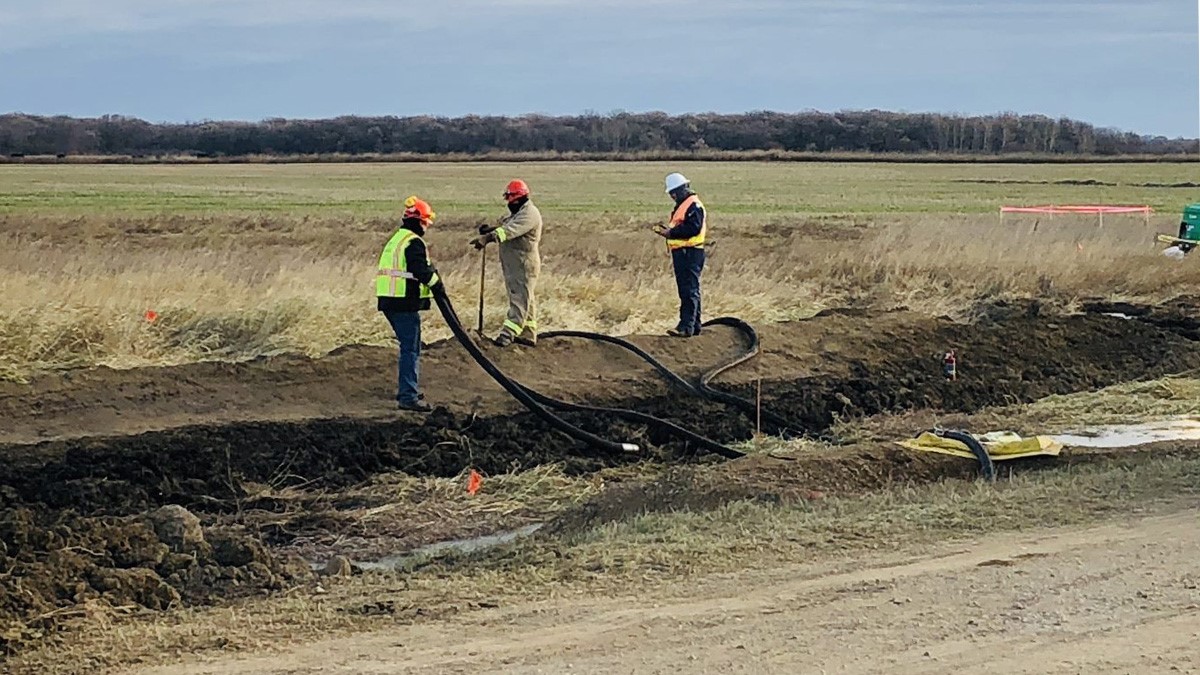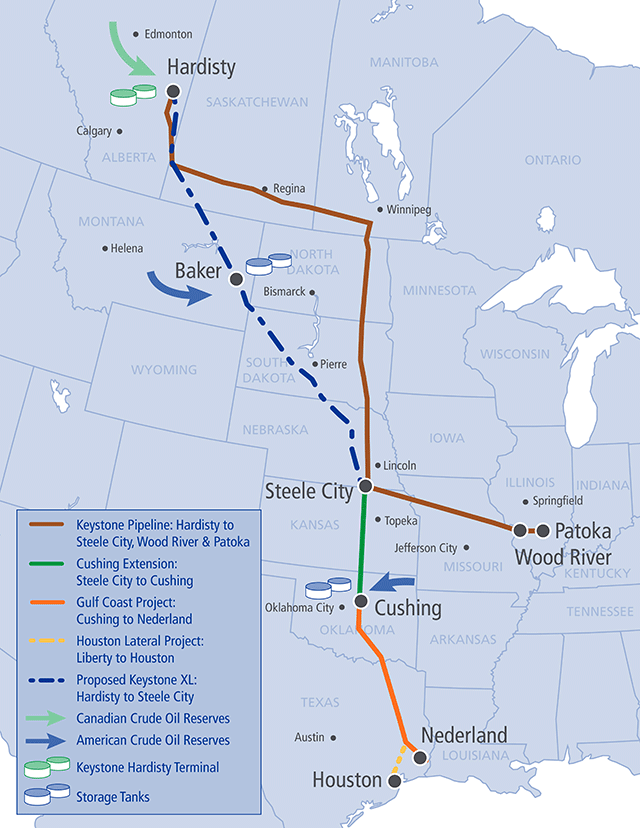A crude oil spill from the Keystone pipeline in eastern North Dakota has turned out to have affected almost 10 times the amount of land as first reported, a state regulator said Monday.

North Dakota environmental scientist Bill Suess said the leak reported on Oct. 29 is now estimated by state regulators to have affected about 19,426 square meters (209,100 square feet) of land near Edinburg. State regulators had said the leak affected about 2,090 square meters (22,500 square feet) of land.
Calgary-based TC Energy, formerly known as TransCanada, estimated its pipeline leaked an estimated 1.4 million litres (383,000 gallons) of oil. Suess said that estimate has not changed.
READ MORE: Keystone pipeline leaks more than 1.4M litres of oil in North Dakota
The cause of the spill is still unknown. An affected portion of the pipe has been sent to a third-party laboratory for inspection, as required by federal regulators.
TC Energy said the pipeline returned to service on Nov. 10 after approval of a repair and restart plan by the U.S. Pipeline and Hazardous Materials Safety Administration.

Get daily National news
READ MORE: Keystone pipeline back in service after North Dakota breach
The company has not given an estimate on the land that was affected, Suess said. The initial estimate by state regulators was “a quick and dirty look at it,” he said. “We did have some surface expansion since then.”
The company reported late Sunday that it had recovered about 1.2 million litres (337,550 gallons) of oil, along with 536,900 litres (141,834 gallons) of oily water, Suess said.
- Hurricane Helene claims lives of Georgia mother and her one-month-old twins
- Tropical Storm Milton forms in Gulf of Mexico, could intensify as a hurricane threatening Florida
- Northern lights set to shine in parts of Canada this weekend. Here’s where
- Imperial Oil to pay hefty fine for 2021 oil spill that sickened residents
Cleanup crews and state regulators remained at the site on Monday. Some wetlands were affected, but not any sources of drinking water, he said.
TC Energy has said people were at the site working around the clock to clean up the spill. Suess said the cleanup work was cut to daylight hours on Monday.
The company has referred questions to its website but has not updated it in more than a week.
READ MORE: Here’s how experts say the Keystone oil spill could impact Canadian oil, gas prices
TC Energy has put up berms around the affected area and is excavating contaminated soil from the entire site, at depths of up to 1.8 metres (six feet), Suess said. The oily soil is being stockpiled and will be taken to a landfill in Sawyer, North Dakota, he said.
“We really don’t have any risk of anything spreading at this point,” he said.
Crude began flowing through the US$5.2 billion pipeline in 2011. It’s designed to carry oil across Saskatchewan and Manitoba, and through North Dakota, South Dakota, Nebraska, Kansas and Missouri on the way to refineries in Patoka, Illinois and Cushing, Oklahoma. It can handle about 87 million litres (23 million gallons) daily.
It is part of a system that also is to include the proposed US$8 billion Keystone XL pipeline designed to transport oil from Hardisty, Alta. to terminals on the Gulf Coast in Texas.
The proposed Keystone XL pipeline has drawn opposition from people who fear it will cause environmental damage.








Comments